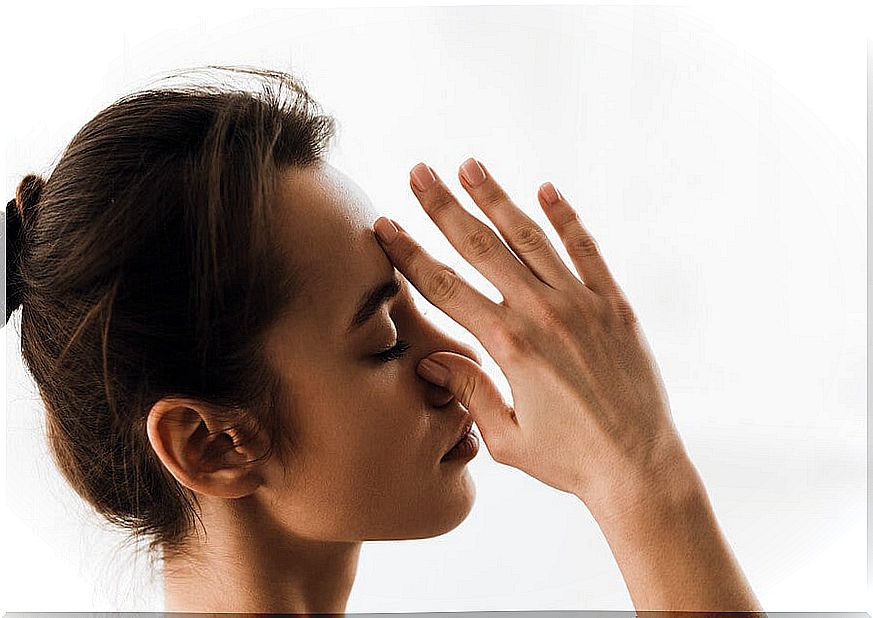Breathing Techniques To Reduce Blood Pressure
Breathing techniques are complementary strategies to the treatment indicated by the doctor for high blood pressure and a very simple way to maximize well-being. Learning them can take some time, but ultimately they are very useful to feel good every day.
High blood pressure is one of the most common silent diseases in the population worldwide and it is essential to pay attention to it once the diagnosis is indicated in the medical consultation.
When the doctor diagnoses us with hypertension, it is vital that we learn to take care of our diet, that we reduce the consumption of salt and that we avoid being sedentary. But in addition to this, we must follow their treatment and recommendations, as these will help us to enjoy a good quality of life.
Now, what if we had one more strategy at our disposal to reduce high blood pressure at home?
1. Focused breathing to turn off mental noise
A simple and effective technique for lowering blood pressure is to focus on one word, focus on it to “turn off” mental noise as well as erratic thoughts that often cause stress and anxiety. Once you have reached that inner calm, start with the first of the breathing techniques.
- Sit in a comfortable place with your back straight.
- Choose a word : wind, forest, river, sun, rain, harmony, balance, peace, tranquility, flow, etc.
- Repeat it slowly until an image appears in your mind.
- Now take a deep breath.
- Hold that breath for 4 seconds, then exhale loudly for several seconds.

2. Breathing to “cool down” the body
Another of the breathing techniques that we will explain below may be curious but, even so, it is useful and effective to reduce the heart rate, calm the mind and regulate blood pressure.
This technique is usually practiced in yoga and is called Sheetali , a term that comes from Sanskrit and could be translated as “cold calm” or “cool the body.”
- Sit with your spine straight.
- Relax your shoulders and arms.
- Breathe in air slowly, relaxed.
- Then stick your tongue out and, with the tip of it, try to draw a “U” in the air.
- While doing this exercise, inhale for 5 seconds (concentration should be maximum).
- Now, calmly close your mouth again and feel that curious freshness inside you …
3. Breathing to reduce high blood pressure
This is a simple and effective option to harmonize your breathing and find mental calm. Take note of the process:
- Sit comfortably, with your back straight.
- Next, gently tilt your head back.
- Close your eyes and rest your hands on your knees.
- Now inhale and exhale five times, slowly, as slowly as possible.
- The breaths should be loud, therefore, do not hesitate to purse your lips as if you were going to pronounce the vowel “o”.
4. Abdominal breathing
Abdominal or diaphragmatic breathing is the best known and, without a doubt, the most used. Thus, if you had to choose any of these 5 techniques to reduce blood pressure, this would be one of the most useful.
- Place one hand on your chest and one on your belly.
- Now, breathe deeply through your nose, so that you notice how your diaphragm is widening – not your chest.
- Hold that oxygen for a few seconds and then breathe out deeply.
- Repeat it for 10 minutes, you will see how your mind clears and how your heart is balanced.
5. Alternative nasal breathing
This technique is helpful for stress reduction and even better sleep. In fact, we recommend that you do it when you are in bed and 30 minutes before going to bed.
It will provide you with a restful sleep and you will wake up with a very adequate blood pressure. These are the steps you must follow:
- Sit comfortably, but with a straight back.
- Relax for a few minutes.
- Next, bring your right thumb towards your nose to cover the right nostril.
- Take a deep breath through your left nostril.
- When you have reached the maximum of your inhalation and you cannot breathe in more air, close that left nostril with your right ring finger.
- Now exhale through the other hole, the one in the right nostril.
- Next, do the same thing again, but on this side, that is, once you have taken the maximum amount of air into that right nostril, close it and exhale through the left.

Ready to put breathing techniques into practice?
As you have seen, the main objective of breathing techniques is to teach people to breathe deeply and slowly.
Now that you know this, will you dare to practice these fabulous breathing techniques daily to maximize your well-being? Realize that if you do, both your heart and your mind will thank you greatly.
According to the psychologist Alejandra Alonso, breathing techniques are always recommended for psychological and pulmonary health, among other issues because they are strategies that can help reduce the heart rate.
Therefore, remember that something as simple as breathing well will not only relieve you on a psychological level, but also on a physical level and all this will significantly influence your well-being.









